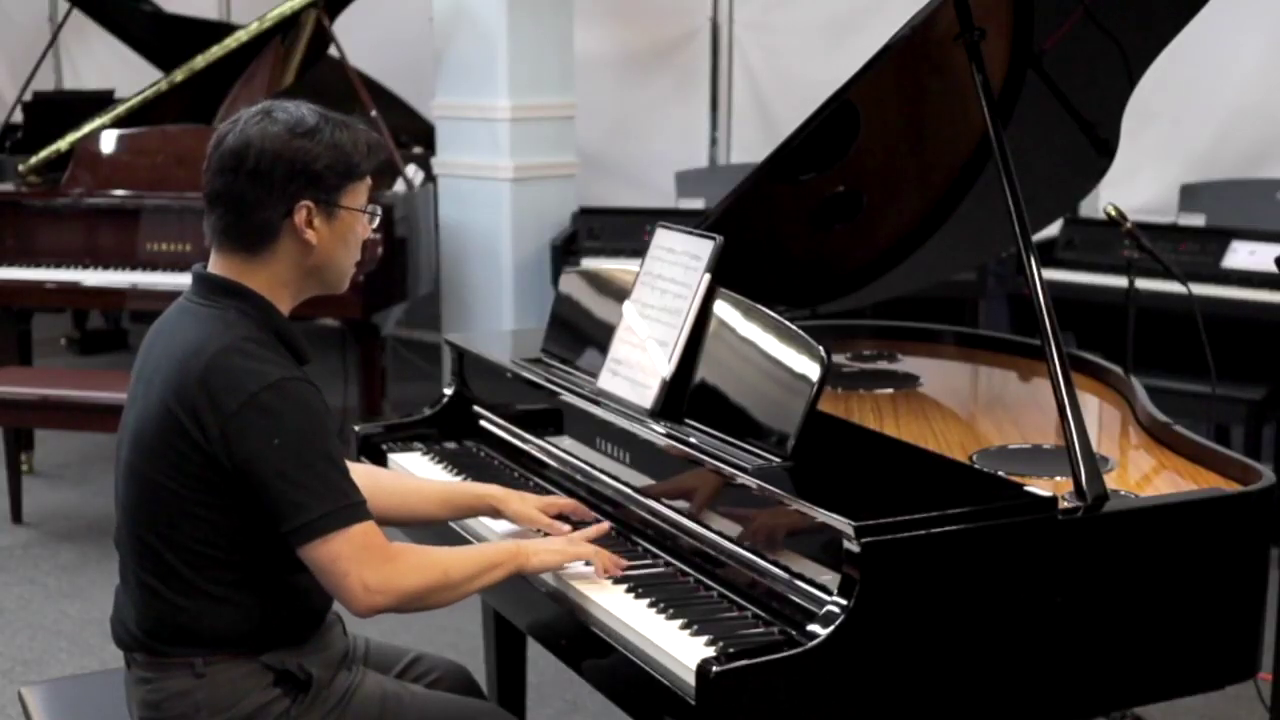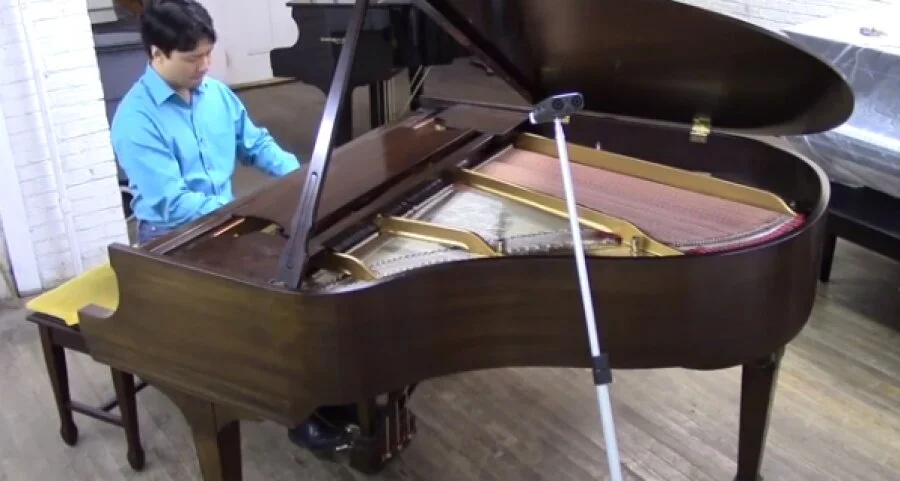For decades, Yamaha’s Conservatory Series of grand pianos were legendary. They dominated music programs, concert halls, and even recording studios all around the world. As a Testament to Yamaha’s never ending quest for perfection and improvement, Yamaha developed the CX line of premium pianos. Now with that introduction of the CX series, Yamaha had an opportunity to revisit the Conservatory Series and look for ways to offer the DNA, as it were, of their Conservatory Series but in a form factor that was both improved and also more economically feasible for the home, for private studios and even for conservatories around the world. And with that, the Conservatory Series was reborn in the GC series.
Now we’ve got a really interesting opportunity to compare between two pianos of the same family, but different sizes. The GC1 is a 5’3″ grand piano, and the GC2 is 5’8″ from the keyboard to the tail. So let’s have a little bit of fun and let’s compare to see what five inches of size difference can do between these two pianos.
Read More



















